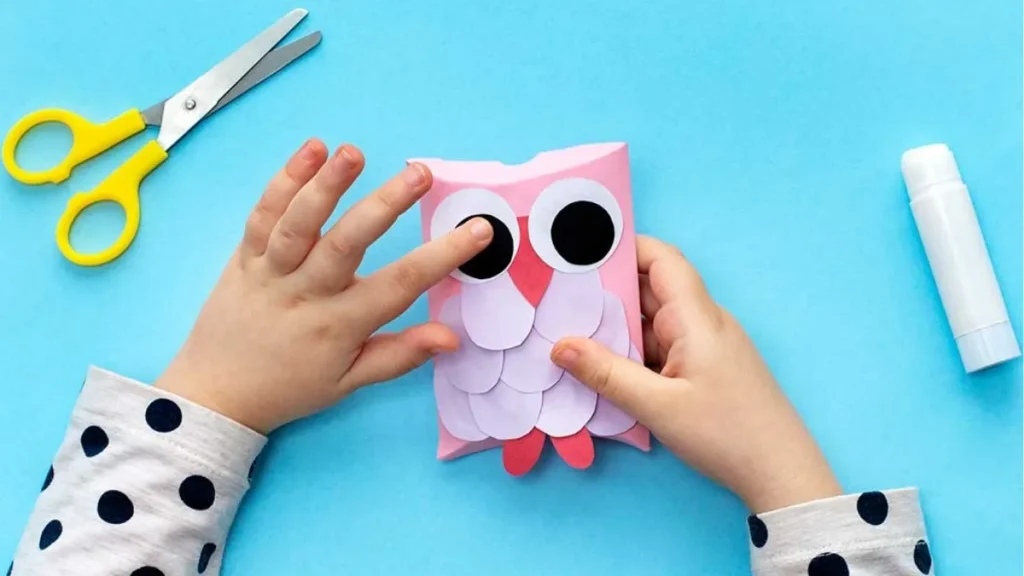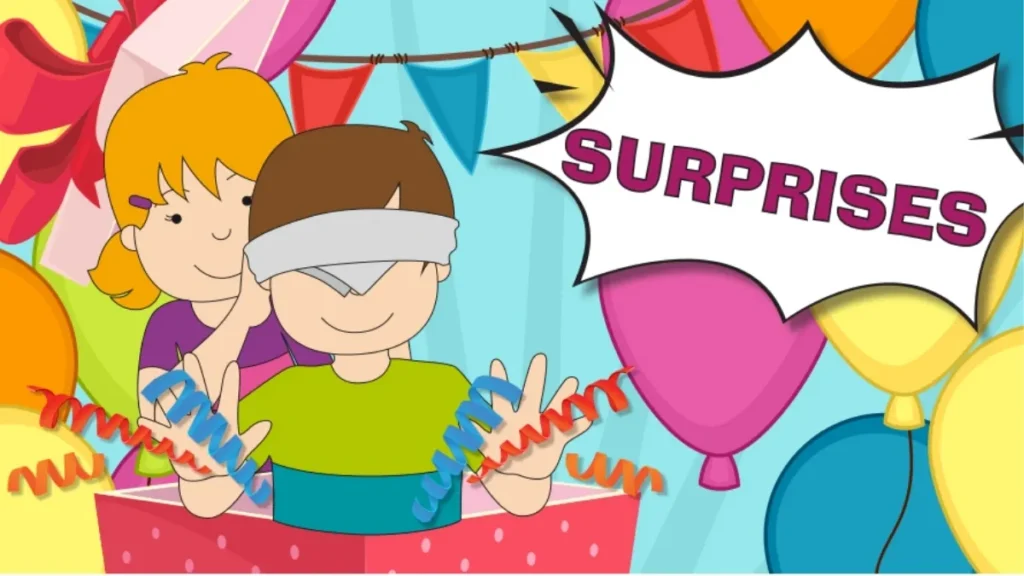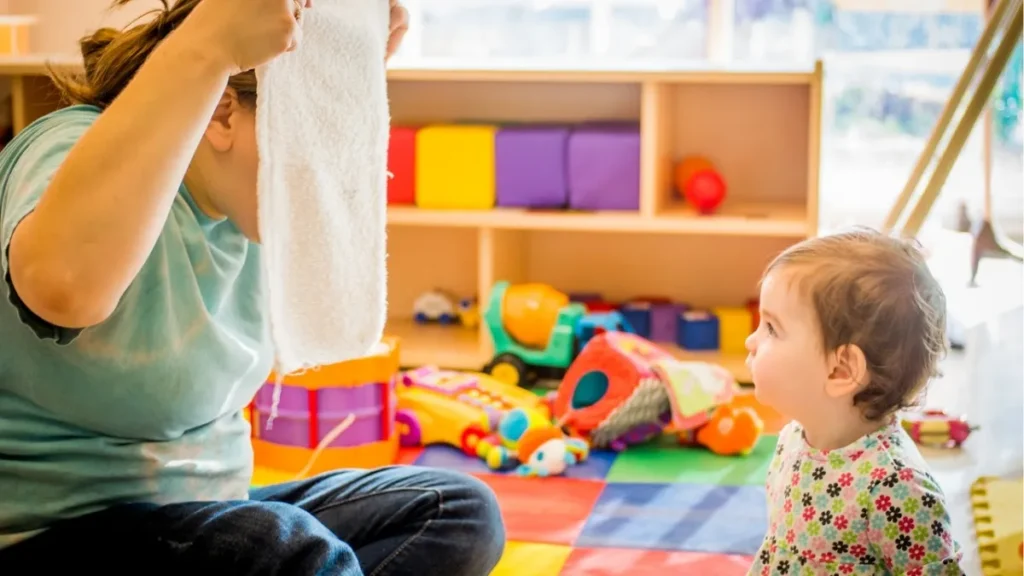Two-year-olds are little bundles of boundless energy and insatiable curiosity. They’re constantly on the move, soaking in the world around them.
This is a pivotal time for brain development, and nurturing their natural curiosity is key.
Montessori activities provide a perfect way to engage your toddler in a way that fosters independence, exploration, and a love for learning.
Fun And Educational Activities For 2 Year Olds
Keeping your busy 2-year-old entertained and learning doesn’t require fancy equipment or outings. With a little creativity and everyday household items, you can create a world of discovery and joy.
Here are 20 Montessori-inspired activities to spark your child’s development:
Activity 1: Easter Eggs

Age Group: 18 months – 2 years old
Materials: Plastic Easter eggs (2 halves), dry beans/rice, stickers (optional)
How to Perform: Fill two plastic Easter egg halves with dry beans or rice. Decorate the eggs with stickers if you like. Securely seal the halves together. Let your child shake the eggs and listen to the rattling sound. This simple activity strengthens auditory processing and hand-eye coordination.
Area of Development: Auditory processing, Hand-eye coordination
Activity 2: Putting In and Taking Out
Age Group: 18 months – 2 years old
Materials: Box with lid, container (plastic cup, bowl)
How to Perform: Find a box with a lid that your child can easily open and close. Show them how to put things in and take them out of the box. You can use a container like a cup or bowl for them to practice with. This repetitive motion strengthens fine motor skills and object permanence.
Area of Development: Fine motor skills, Object permanence
Activity 3: Sorting by Color

Age Group: 18 months – 2 years old
Materials: Pom poms (various colors), bowls or containers
How to Perform: Gather pom poms in different colors. Provide bowls or containers for your child to sort the pom poms by color. Even if they don’t perfectly sort them yet, this activity introduces color recognition and helps develop sorting skills.
Area of Development: Color recognition, Sorting skills
Activity 4: Stacking Rings

Age Group: 18 months – 2 years old
Materials: Stacking toy rings
How to Perform: Stacking toys are classic for a reason! Provide your child with a stacking toy with large, colorful rings. Demonstrate how to stack the rings and then let them explore and experiment. This activity strengthens hand-eye coordination and problem-solving skills.
Area of Development: Hand-eye coordination, Problem-solving skills
Activity 5: Textured Basket
Age Group: 18 months – 2 years old
Materials: Basket, fabric scraps (different textures)
How to Perform: Fill a basket with fabric scraps in various textures, like felt, fleece, and satin. Let your child reach into the basket and explore the different feels. This sensory activity introduces them to texture exploration and strengthens their sense of touch.
Area of Development: Sensory development, Tactile discrimination
Activity 6: Crinkle Paper Fun

Age Group: 18 months – 2 years old
Materials: Tissue paper (various colors)
How to Perform: Crumple up colorful tissue paper into balls. Show your child how to crinkle the paper in their hands and make noise. Let them loose with the crinkly paper for a fun sensory activity. This helps develop hand-eye coordination and fine motor skills.
Area of Development: Hand-eye coordination, Fine motor skills
Activity 7: Big Book Look

Age Group: 18 months – 2 years old
Materials: Large, colorful children’s book
How to Perform: Choose a big, colorful children’s book with captivating pictures. Sit with your child and turn the pages together, pointing out objects and naming them. This activity fosters a love for books and introduces basic language development.
Area of Development: Language development, Literacy skills
Activity 8: Chunky Bead Transfer
Age Group: 18 months – 2 years old Materials: Large, colorful beads, container (bowl, cup)
How to Perform: Provide your child with large, colorful beads and a container. Show them how to pick up the beads one at a time and transfer them to the container. This activity strengthens hand-eye coordination and fine motor skills.
Area of Development: Hand-eye coordination, Fine motor skills
Activity 9: Treasure Basket

Age Group: 18 months – 2 years old
Materials: Basket, safe household objects (spoons, wooden blocks, whisk)
How to Perform: Fill a basket with a variety of safe household objects, like wooden spoons, blocks, or a whisk. Let your child explore the objects in the basket, picking them up, shaking them, and mouthing them (under supervision). This open-ended play encourages curiosity and exploration.
Area of Development: Curiosity, Exploration
Activity 10: Peek-A-Boo Play

Age Group: 18 months – 2 years old
Materials: No materials needed!
How to Perform: Peek-a-boo is a timeless game that little ones love. Cover your face with your hands and say “peek-a-boo!” Then reveal your face and smile. This simple game strengthens social interaction and develops a sense of object permanence.
Area of Development: Social interaction, Object permanence
Activity 11: Shoebox Sorting

Age Group: 18 months – 2 years old
Materials: Empty shoebox, colorful objects (pom poms, plastic toys)
How to Perform: Decorate an empty shoebox and cut out a large hole on the side. Fill the box with colorful objects like pom poms or plastic toys. Show your child how to put the objects through the hole. This activity strengthens hand-eye coordination and fine motor skills.
Area of Development: Hand-eye coordination, Fine motor skills
Activity 12: Filling and Spilling

Age Group: 18 months – 2 years old
Materials: Container (cup, bowl), water (small amount), sponge (optional)
How to Perform: Fill a cup or bowl with a small amount of water. Provide your child with a sponge (optional) and let them explore filling and spilling the water. This simple play is a great introduction to concepts like full and empty.
Area of Development: Science exploration, Basic concepts
Activity 13: Duplo Towers

Age Group: 18 months – 3 years old
Materials: Large Duplo blocks
How to Perform: Duplo blocks are a fantastic tool for open-ended play. Provide your child with a set of large Duplo blocks and let them build towers, houses, or anything their imagination conjures. Building with blocks strengthens spatial reasoning and problem-solving skills.
Area of Development: Spatial reasoning, Problem-solving skills
Activity 14: Playdough Pals

Age Group: 18 months – 3 years old
Materials: Playdough (homemade or store-bought)
How to Perform: Even toddlers can enjoy getting creative with playdough! Provide a small amount of non-toxic playdough and show your child how to roll, flatten, and shape it. Let their imaginations run wild! Playdough is a great way to develop those all-important fine motor skills.
Area of Development: Fine motor skills, Creativity
Activity 15: Singing and Dancing

Age Group: 18 months – 3 years old
Materials: Music player (optional)
How to Perform: Put on some music (or sing along!) and have a dance party with your child. Move your bodies together, clap your hands, and twirl around. Singing and dancing are fun ways to bond with your child and develop their sense of rhythm and coordination.
Area of Development: Social bonding, Music appreciation, Coordination
Activity 16: Ball Games

Age Group: 18 months – 3 years old
Materials: Ball (beach ball, balloon)
How to Perform: Games with balls are a simple way to get your child moving and develop gross motor skills. Inflate a beach ball or balloon and toss it back and forth with your child. You can also try rolling the ball or kicking it gently across the room. These activities encourage coordination and gross motor development.
Area of Development: Gross motor skills, Coordination
Activity 17: Water Play

Age Group: 18 months – 3 years old
Materials: Shallow bin/pan, water, cups, spoons (optional)
How to Perform: Fill a shallow bin or pan with a small amount of water. Provide your child with cups and spoons (supervised use) for splashing, pouring, and scooping. Water play is a sensory experience that strengthens fine motor skills and introduces basic science concepts.
Area of Development: Sensory development, Fine motor skills, Science exploration
Activity 18: Chunky Puzzle Play

Age Group: 18 months – 3 years old
Materials: Puzzles (large wooden knobs)
How to Perform: Puzzles are a great way to challenge your child’s developing minds. Choose puzzles with large, chunky pieces that are easy for little hands to grasp. Let them explore the pieces and help them put the puzzle together. This activity strengthens problem-solving skills and spatial reasoning.
Area of Development: Problem-solving skills, Spatial reasoning
Activity 19: Book Basket

Age Group: 18 months – 3 years old
Materials: Basket, favorite children’s books
How to Perform: Create a cozy reading nook with a basket filled with your child’s favorite board books. Let them explore the books at their own pace, turning the pages and looking at the pictures. Snuggle up together for story time, pointing out objects and naming them. This activity fosters a love for books and early literacy development.
Area of Development: Language development, Literacy skills
Activity 20: Matching Fun
Age Group: 2-3 years old
Materials: Cardboard box, socks (same color pairs)
How to Perform: Cut out matching shapes (circles, squares) from leftover cardboard. Place mismatched socks of the same color pair inside the boxes. Let your child match the socks to the corresponding box shapes. This simple matching game strengthens memory and introduces basic sorting skills.
Area of Development: Memory skills, Sorting skills

Conclusion: Cultivate a Love for Learning
By incorporating these Montessori activities into your child’s day, you’ll be surprised at how quickly their skills develop. From refining fine motor skills to laying the foundation for language and math, these activities plant the seeds for a lifelong love of learning.
More importantly, they provide a platform for exploration and discovery, allowing your two-year-old to flourish in a safe and stimulating environment.
Also Read:
- 20 Fun and Easy Activities for 3 Year Olds at Home
- 20 Fun and Easy Activities for 4 Year Olds at Home
- 20 Fun and Easy Activities For 5 Year Olds at Home
- What is a Montessori Bed? – (Are is it safe for toddlers?)
- What To Teach A 4 Year Old: The Essential Guide